Beginner’s Guide to Bird Feeders: Types, Target Birds, and Buying Tips
Table of Contents
Bird feeding is a delightful and rewarding hobby that brings the beauty of nature right into your backyard. However, choosing the right bird feeder can be overwhelming, given the variety of options available. This guide will help you understand the different types of bird feeders, the birds they attract, and what to consider when purchasing one, ensuring you provide the best environment for your feathered visitors.
1. Common Types of Bird Feeders
Hopper Feeders
Hopper feeders, often shaped like little houses, are among the most versatile and popular options. They can hold a large quantity of mixed seeds, making them suitable for attracting a diverse array of birds, including sparrows, finches, chickadees, and cardinals. The seed is stored in a container and dispensed as needed into a tray below, allowing multiple birds to feed at once. However, these feeders can be prone to moisture buildup, so regular cleaning is essential to prevent mold.
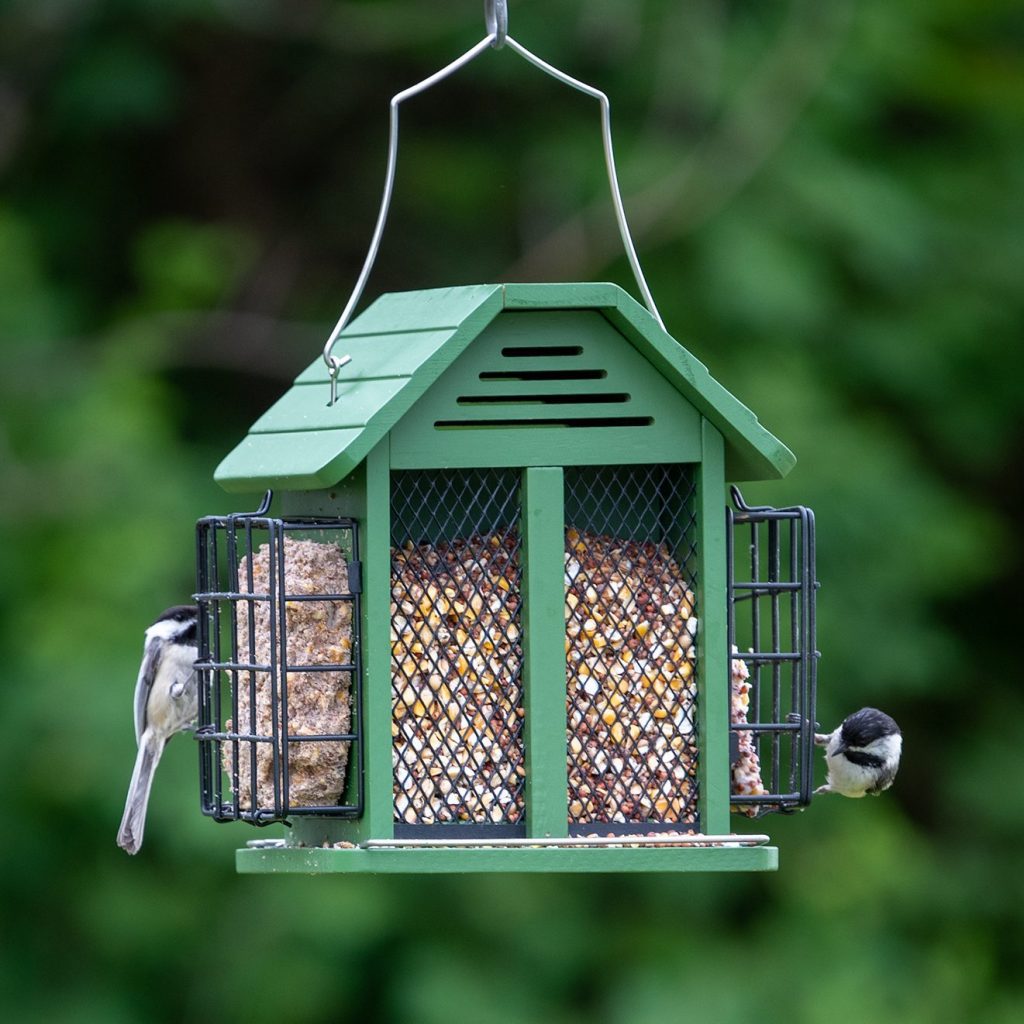
Tube Feeders
Tube feeders are cylindrical feeders with multiple feeding ports along their length. They are ideal for small birds like finches, chickadees, and titmice. These feeders are designed to dispense smaller seeds, such as sunflower seeds or nyjer, and some models come with metal cages to keep out squirrels and larger birds. The vertical design makes tube feeders less prone to spillage and waste, though they do require regular cleaning to prevent seed from spoiling.
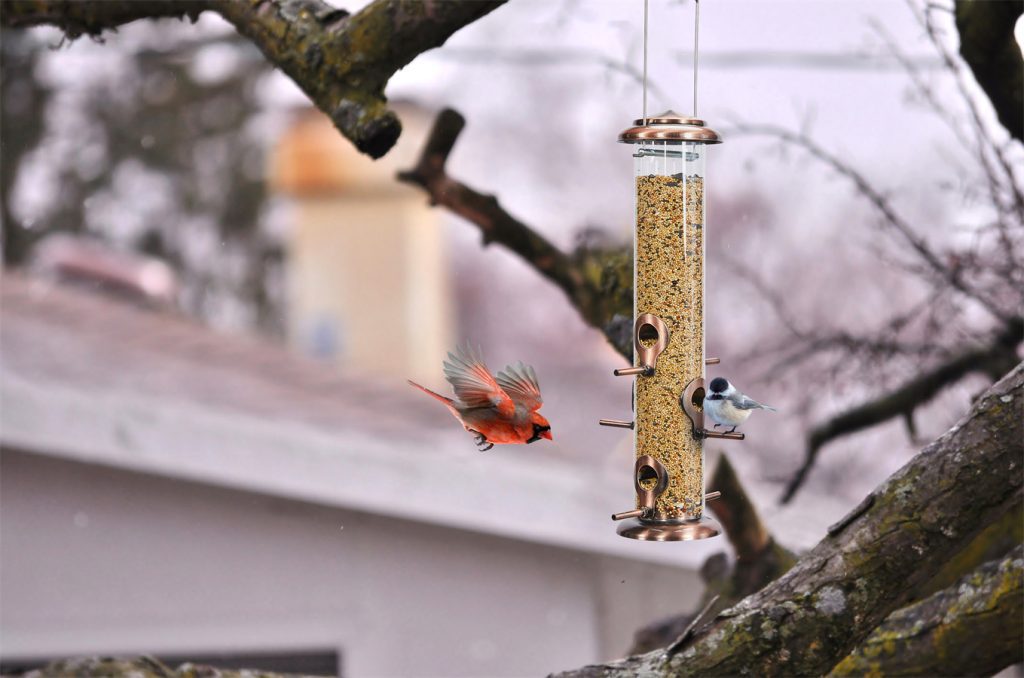
Platform Feeders
Platform feeders are simple, flat trays that can be mounted on poles or placed on the ground. They attract a wide variety of birds, including larger species like jays, doves, and blackbirds. These feeders offer easy access to food, making them very popular among birds that prefer ground feeding. However, the open design also makes them susceptible to contamination from droppings, so frequent cleaning is necessary.
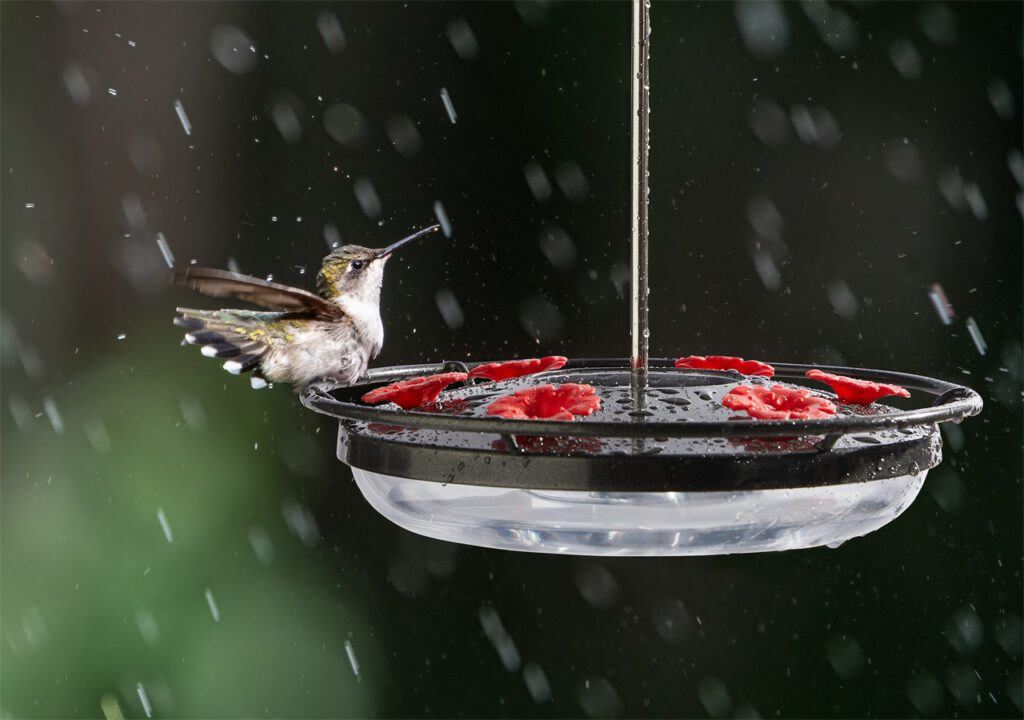
Suet Feeders
Suet feeders are typically made of wire mesh and are used to hold suet cakes—blocks of fat mixed with seeds and other bird foods. Suet is a high-energy food perfect for colder months, attracting woodpeckers, nuthatches, and chickadees. These feeders are easy to hang from trees or poles, but they require more frequent maintenance during warm weather as suet can melt and spoil.
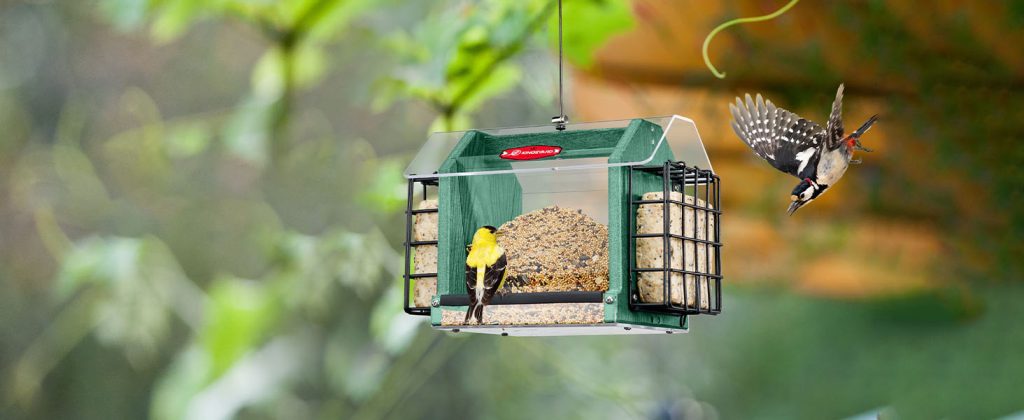
Nectar Feeders
Nectar feeders are specifically designed for hummingbirds and orioles. These feeders hold a sugar-water solution that mimics the natural nectar these birds feed on. To keep your nectar fresh and safe, clean the feeder regularly and replace the nectar every few days, especially during warm weather.
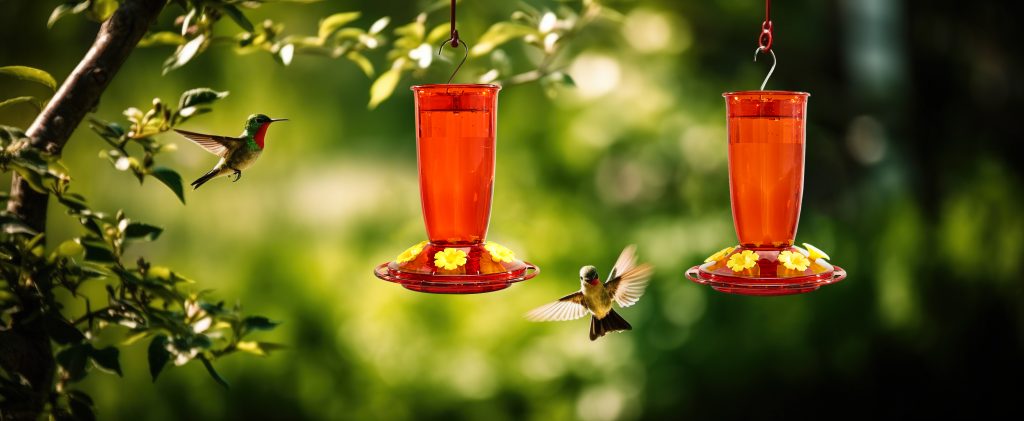
Thistle (Nyjer) Feeders
Thistle feeders are designed to dispense tiny seeds like nyjer, which are particularly attractive to finches, siskins, and redpolls. These feeders are usually made from fine mesh or have tiny feeding ports to accommodate the small seeds. Thistle feeders are a great way to attract colorful finches to your yard, but be sure to keep them clean to prevent seed spoilage.
2. Birds Attracted by Different Feeder Types
Each bird feeder type is designed to attract specific bird species:
- Hopper Feeders: Sparrows, finches, chickadees, cardinals, grosbeaks.
- Tube Feeders: Finches, chickadees, titmice, pine siskins.
- Platform Feeders: Jays, doves, sparrows, blackbirds.
- Suet Feeders: Woodpeckers, nuthatches, chickadees, starlings.
- Nectar Feeders: Hummingbirds, orioles.
- Thistle Feeders: Goldfinches, siskins, redpolls
Choosing the right feeder based on the birds you wish to attract will help you create a vibrant and diverse bird-watching experience in your backyard.
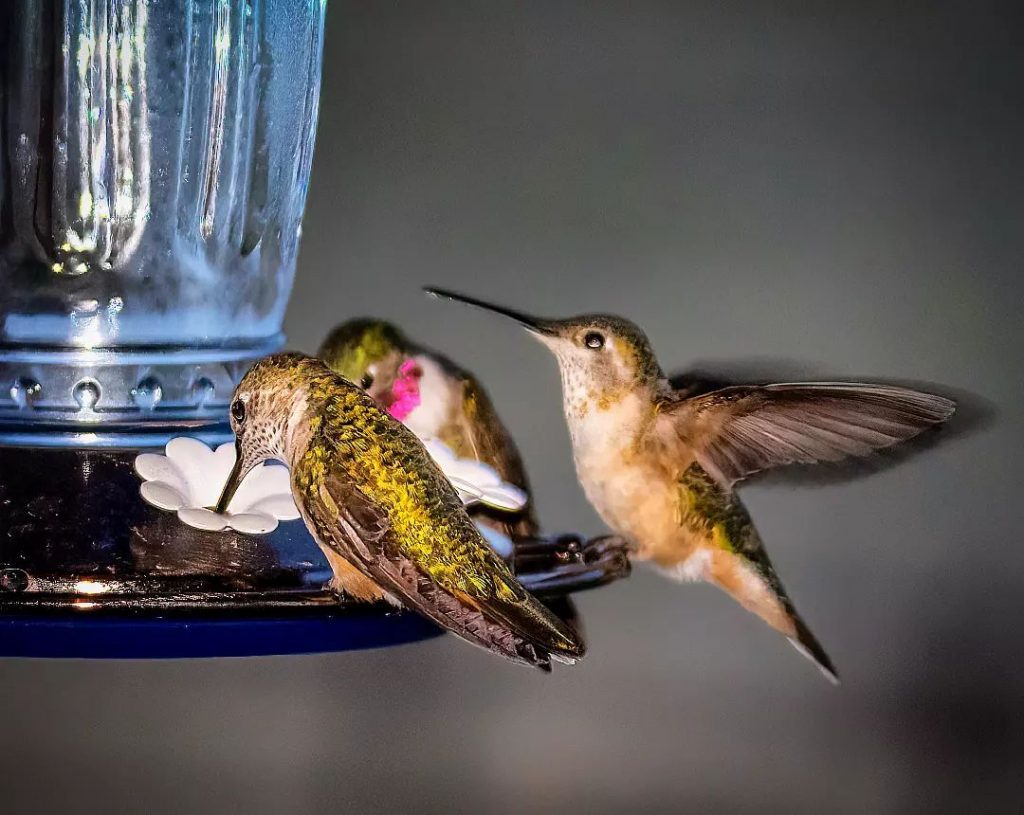
3. Factors to Consider When Buying a Bird Feeder
When selecting a bird feeder, consider the following factors to ensure it meets your needs and the needs of the birds:
- Material and Durability: Look for feeders made from sturdy, weather-resistant materials like metal or UV-stabilized plastic. These materials will last longer and better withstand the elements.
- Ease of Cleaning: Feeders that are easy to disassemble and clean will help you maintain a healthy feeding environment for the birds. Regular cleaning is crucial to prevent the spread of diseases.
- Squirrel-Proofing: If squirrels are a problem in your area, consider squirrel-proof feeders or add a baffle to your setup. Squirrels can quickly deplete your birdseed supply and deter birds from visiting.
- Seed Capacity and Protection: Choose a feeder with an appropriate seed capacity for your needs. Larger feeders require less frequent refilling but may be harder to clean. Also, ensure the feeder offers some protection against rain to keep the seed dry and fresh.
4. Maintenance Tips for Bird Feeders
Proper maintenance of your bird feeders is essential to keep your backyard visitors healthy and happy:
- Regular Cleaning: Clean your feeders at least once every two weeks, more often if the weather is damp or humid. Use a solution of one part vinegar to nine parts water or a mild soap solution, and rinse thoroughly.
- Monitor for Mold: Moldy seed can be fatal to birds, so it’s important to check your feeders regularly, especially after rain. Discard any seed that shows signs of mold or clumping.
- Rotate Feeder Locations: Moving your feeders periodically can help prevent the buildup of droppings and seed hulls, which can harbor bacteria and attract pests.
5. Tips for Attracting Specific Birds
If you have particular birds in mind, here are some tips to help you attract them:
- Goldfinches: Use thistle feeders filled with nyjer seed to attract these vibrant yellow birds.
- Woodpeckers: Hang suet feeders in areas with plenty of tree cover to draw in woodpeckers, especially during the colder months when they need extra energy.
- Hummingbirds: Set up nectar feeders in shady areas and fill them with a homemade sugar-water solution (1 part sugar to 4 parts water) to invite these tiny, colorful birds to your yard.
Conclusion
Bird feeding is a wonderful way to connect with nature and enjoy the beauty of wildlife up close. By selecting the appropriate bird feeder and maintaining it properly, you can create a sanctuary that not only attracts a diverse array of bird species but also supports their well-being throughout the year. The right feeder, combined with regular upkeep, helps ensure that your backyard remains a safe, clean, and welcoming haven for birds. Whether you’re drawing in the vibrant colors of finches and cardinals, the lively chatter of chickadees, or the mesmerizing hover of hummingbirds, your efforts will be rewarded with the joy of observing these fascinating creatures in their natural behavior.
Moreover, bird feeding contributes to the local ecosystem by providing much-needed food sources, especially during harsh weather conditions when natural resources are scarce. It’s a fulfilling hobby that not only enhances your outdoor space but also plays a vital role in supporting bird populations. With the right knowledge and commitment, your backyard can become a thriving refuge where birds can find nourishment, shelter, and safety, enriching your connection to the natural world and offering countless moments of tranquility and wonder.
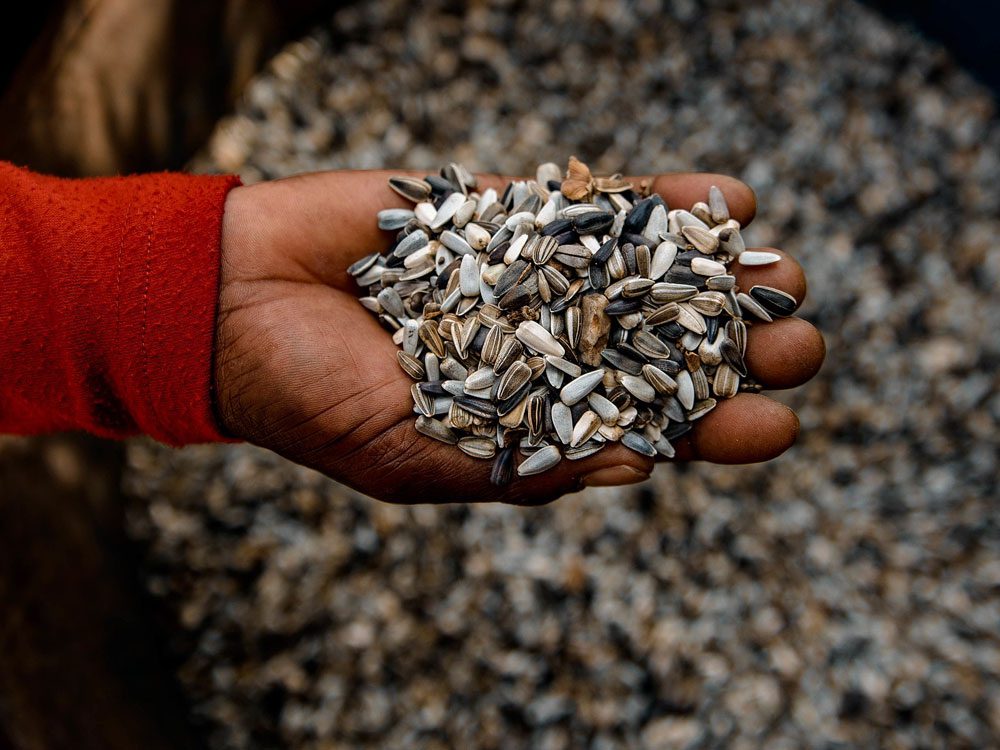
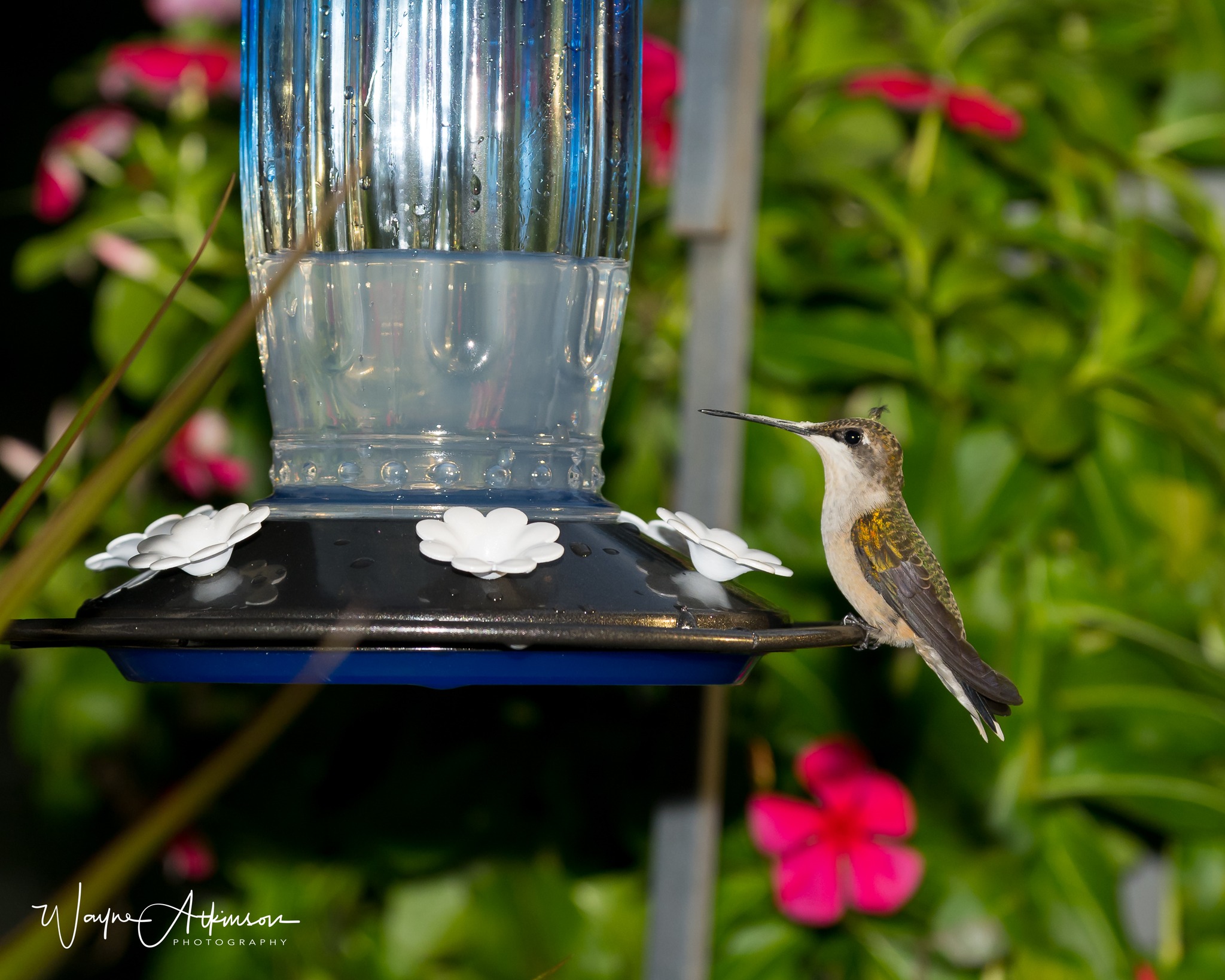
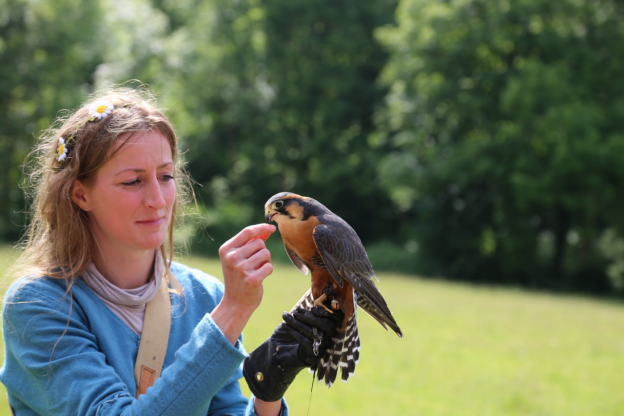
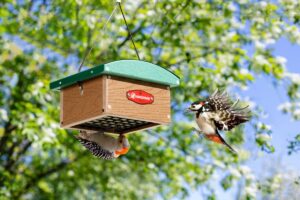
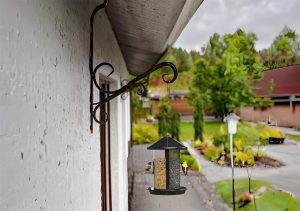
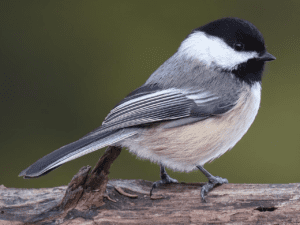
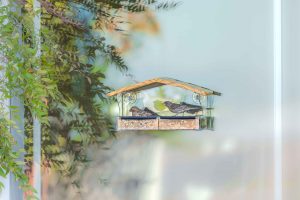
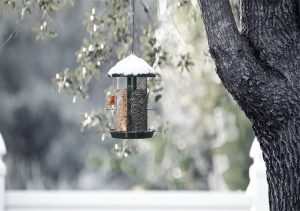
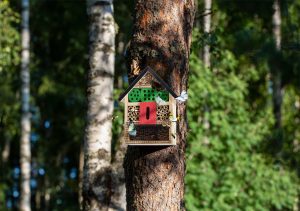
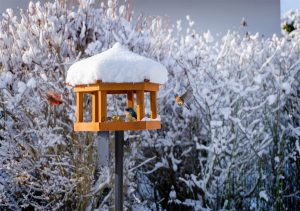
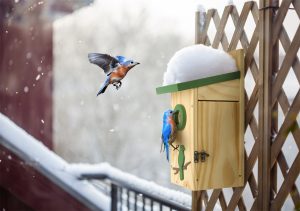
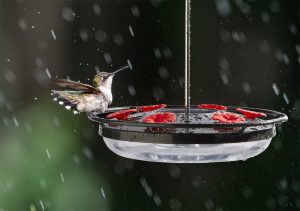
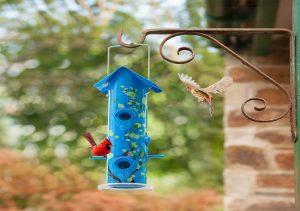
Post Comment